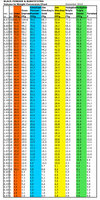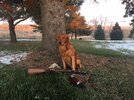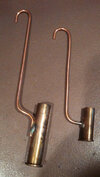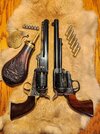Welcome to the fold,
@American_Fusilier. You'll find more BS in muzzleloading than in a Kansas City feedlot. Here's some of mine.

I agree with those who say a percussion revolver - especially one as popular as an 1851 Navy - is a fine place to start. They really are pretty simple to manage.
As others have noted, it can be a good idea to avoid brass frames, as the soft metal wears with use. I would also warn that none of the Italian guns are are as good as they could be, and that paying a specialty gunsmith - several of them post at THR - will result in a gun as reliable and useful as any modern centerfire.
A percussion rifle, like the Hawken, can also be a great deal of fun and a fine, easy way to start. Pedersoli's "Rocky Mountain Hawken" may be the best of the mass-produced models, though the price tag can be a shock. The good news is that it's not hard to make a reasonably accurate and reliable caplock rifle, and just about any of the currently made ones should serve.
With regard to powder, in my opinion the substitutes are all second best to the real thing. You may hear stories of reduced fouling, easier cleaning, or greater accuracy/energy/whatever, but in my experience those are all just stories. The real reason for the existence of substitutes is legal red tape: it is easier for stores to keep and sell it, as compared with actual blackpowder. If you cannot get the real thing, then the subs are fine, but I would not go out of my way to get them.
I can't tell if the suggestion about starting with an inline is supposed to be a joke.
Short version: I'd just buy the one you've been looking at. Once it arrives, you should get fingerprints all over it, then start a post about what you got. We'll all admire it and give you endless (and conflicting) advice - you should ignore all of it but mine - and then you should buy the bare minimum of stuff to get you going. After shooting it a few times, you'll know two things: whether you want to pursue it, and whether you need more stuff to enhance your experience.







